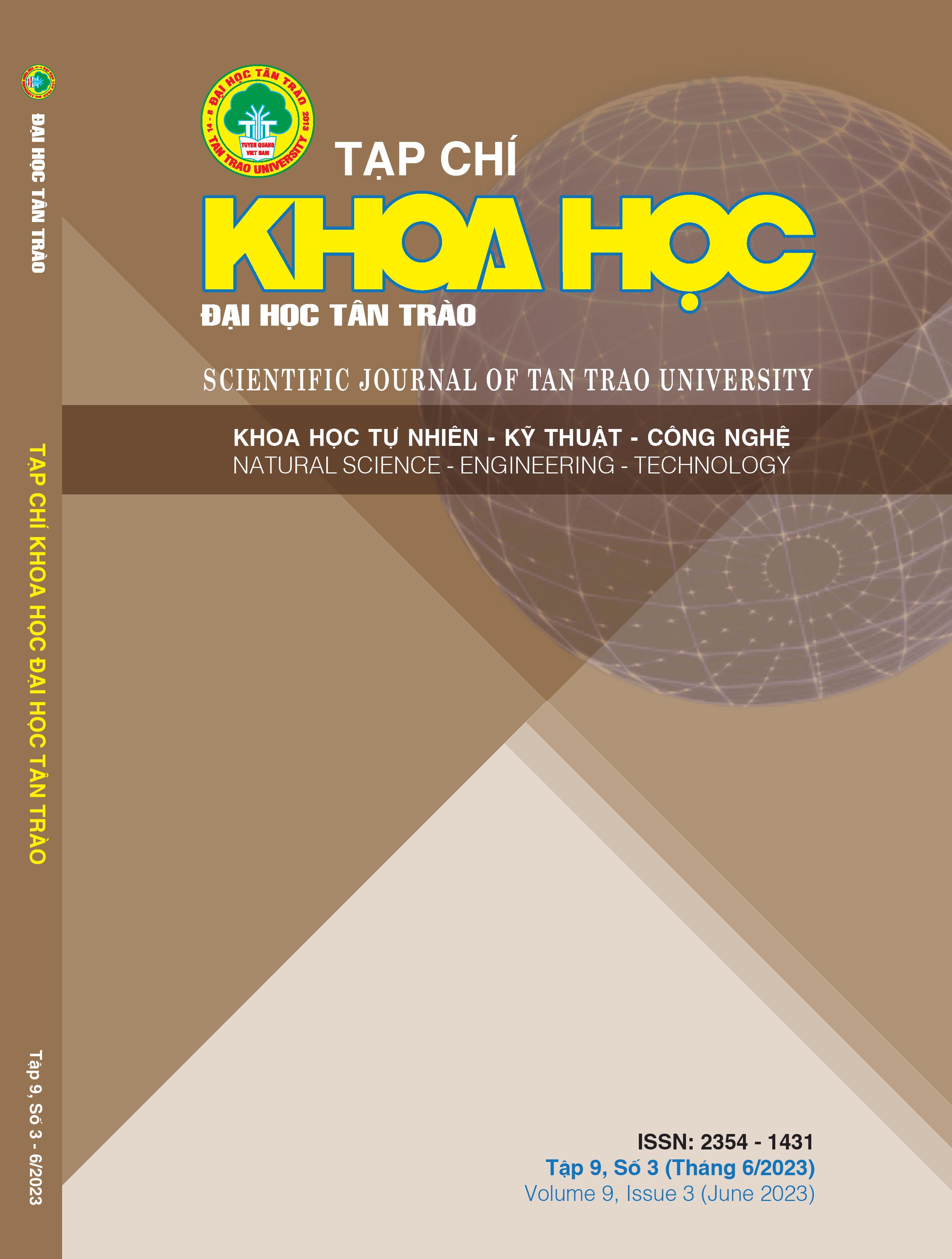PATH LOSS MODEL IN INTELLIGENT RADIO ENVIRONMENT
DOI:
https://doi.org/10.51453/2354-1431/2023/971Keywords:
Reconfigurable intelligent surface, Intelligent reflecting surfaces, Beyond 5G, Pathloss model, Smart radio environment.Abstract
Smart reflective surface is a new technology that is being researched and deployed to develop wireless communication systems, as well as 5G, post-5G (B5G) and future 6G mobile networks. The surface contains reconfigurable electromagnetic metamaterial to direct the beam from the source to the desired receivers with maximum signal strength. The paper provides a pathloss and channel model in a smart surface-assisted communication system built based on physical-optical techniques and Snell's light reflection theorem. With mathematical expressions, it will provide researchers with a way to calculate, simulate, analyze, evaluate and calibrate communication channels to achieve optimal efficiency before deploying experimental fabrication. or for comparison with other information transfer enhancement technologies such as AF relay and amplifier, MIMO beamforming, and BackCom backscatter communication.
Downloads
References
[1] M. Patzold, “It’s time to go big with 5G mobile radio,” IEEE Vehicular Technology Magazine, vol. 13, no. 4, pp. 4-10, 2018.
[2] W. Saad, M. Bennis, and M. Chen, “A vision of 6G wireless systems: Applications, trends, technologies, and open research problems,” in IEEE Network, vol. 34, no. 3, pp. 134 - 142, Oct. 2019.
[3] X. Cao, L. Liu, Y. Cheng, and X. S. Shen, “Towards energy-efficient wireless networking in the big data era: A survey,” IEEE Commun. Surv. Tut., vol. 20, no. 1, pp. 303-332, Firstquarter 2018.
[4] M. R. Akdeniz et al., “Millimeter wave channel modeling and cellular capacity evaluation,” IEEE J. Sel. Areas Commun., vol. 32, no. 6, pp. 1164-1179, Jun. 2014.
[5] Q. Wu and R. Zhang, “Towards smart and reconfigurable environment: Intelligent reflecting surface aided wireless network,” IEEE Commun. Mag., vol. 58, no. 1, pp. 106-112, Jan. 2020.
[6] M. D. Renzo et al., “Smart radio environments empowered by reconfigurable AI meta-surfaces: An idea whose time has come,” EURASIP J. Wireless Commun. Netw., vol. 2019, May 2019, Art. no. 129.
[7] E. Basar, M. Di Renzo, J. de Rosny, M. Debbah, M.-S. Alouini, and R. Zhang, “Wireless communications through reconfigurable intelligent surfaces,” in IEEE Access, vol. 7, pp. 116753 - 116773, Aug. 2019.
[8] E. Basar, “Transmission through large intelligent surfaces: A new frontier in wireless communications,” European Conference on Networks and Communications (EuCNC), 2019.
[9] Z.-Q. He and X. Yuan, “Cascaded channel estimation for large intelligent metasurface assisted massive MIMO,” in IEEE Wireless Communications Letters, vol. 9, pp. 210 - 214, Oct. 2019.
[10] X. Tan, Z. Sun, D. Koutsonikolas, and J. M. Jornet, “Enabling indoor mobile millimeter-wave networks based on smart reflect-arrays,” IEEE Conference on Computer Communications (INFOCOM), 2018, pp. 270-278.
[11] T. Ulversoy, “Software defined radio: Challenges and opportunities,” IEEE Communications Surveys & Tutorials, vol. 12, no. 4, pp. 531-550, 2010.
[12] D. Mishra and H. Johansson, “Channel estimation and low-complexity beamforming design for passive intelligent surface assisted MISO wireless energy transfer,” in IEEE International Conference on Acoustics, Speech and Signal Processing (ICASSP), 2019, pp. 4659-4663.
[13] L. Subrt and P. Pechac, “Controlling propagation environments using intelligent walls,” proc. European Conf. Antennas Propag. (EUCAP), Mar. 2012, pp. 26-30.
[14] M. Najafi and R. Schober, “Intelligent reflecting surfaces for free space optical communications,” proc. IEEE GLOBECOM, Dec. 2019, pp. 1-7.
[15] Z. Li et al., “Towards programming the radio environment with large arrays of inexpensive antennas,” in Proc. USENIX Symp. Netw. Syst. Design Implement., Feb. 2019, pp. 285-299.
Downloads
Published
How to Cite
Issue
Section
License

This work is licensed under a Creative Commons Attribution-ShareAlike 4.0 International License.
All articles published in SJTTU are licensed under a Creative Commons Attribution-ShareAlike 4.0 International (CC BY-SA) license. This means anyone is free to copy, transform, or redistribute articles for any lawful purpose in any medium, provided they give appropriate attribution to the original author(s) and SJTTU, link to the license, indicate if changes were made, and redistribute any derivative work under the same license.
Copyright on articles is retained by the respective author(s), without restrictions. A non-exclusive license is granted to SJTTU to publish the article and identify itself as its original publisher, along with the commercial right to include the article in a hardcopy issue for sale to libraries and individuals.
Although the conditions of the CC BY-SA license don't apply to authors (as the copyright holder of your article, you have no restrictions on your rights), by submitting to SJTTU, authors recognize the rights of readers, and must grant any third party the right to use their article to the extent provided by the license.


